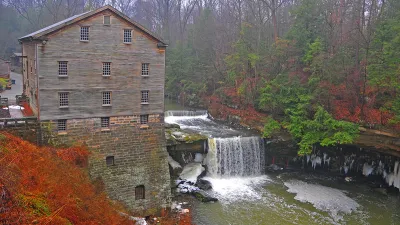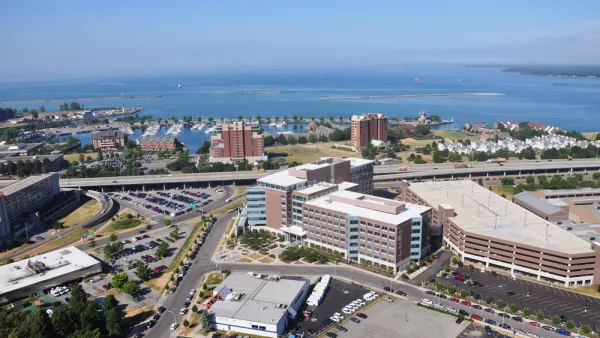The city of Youngstown, Ohio has lost 60 percent of its population since the 1960s. The Youngstown 2010 plan attempted to redevelop a new, smaller city, but how well has it accomplished its goals so far?

Recently faculty members from the University of Michigan’s Ford School Center for Local, State, and Urban Policy hosted a panel called “Lessons from Youngstown: Planning for a Smaller, Greener City,” in the process analyzing the impacts of the Youngstown 2010 Plan.
The Youngstown 2010 Plan, according to a recent article by Maya Kalman, “aimed to involve the community in enhancing the rapidly shrinking city.” Moreover, “[Youngstown 2010] differs from most urban plans, which generally focus on community and population growth.”
“Located among the foothills of the Appalachian Mountains, Youngstown was a center for steel production until the industry began to decline in the 1970s. Urban planners have recently approached the city about looking for ways to redevelop a mid-sized city from a once larger metropolis.”
The faculty panel reported both strengths and weaknesses to the plan’s approach. Included in the plan's strengths: acceptance of the city's decline. The article also describes the Youngstown case study as a model for other shrinking cities, such as Detroit.
FULL STORY: Urban policy experts analyze Youngstown plan

National Parks Layoffs Will Cause Communities to Lose Billions
Thousands of essential park workers were laid off this week, just before the busy spring break season.

Retro-silient?: America’s First “Eco-burb,” The Woodlands Turns 50
A master-planned community north of Houston offers lessons on green infrastructure and resilient design, but falls short of its founder’s lofty affordability and walkability goals.

Delivering for America Plan Will Downgrade Mail Service in at Least 49.5 Percent of Zip Codes
Republican and Democrat lawmakers criticize the plan for its disproportionate negative impact on rural communities.

Test News Post 1
This is a summary

Test News Headline 46
Test for the image on the front page.

Balancing Bombs and Butterflies: How the National Guard Protects a Rare Species
The National Guard at Fort Indiantown Gap uses GIS technology and land management strategies to balance military training with conservation efforts, ensuring the survival of the rare eastern regal fritillary butterfly.
Urban Design for Planners 1: Software Tools
This six-course series explores essential urban design concepts using open source software and equips planners with the tools they need to participate fully in the urban design process.
Planning for Universal Design
Learn the tools for implementing Universal Design in planning regulations.
EMC Planning Group, Inc.
Planetizen
Planetizen
Mpact (formerly Rail~Volution)
Great Falls Development Authority, Inc.
HUDs Office of Policy Development and Research
NYU Wagner Graduate School of Public Service





























